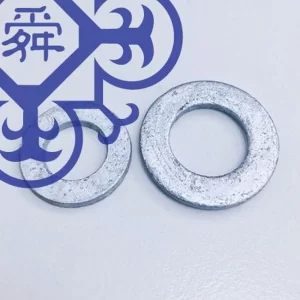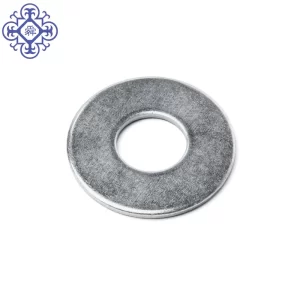
Table of Contents
250HV Description
Introduction
What is 250HV? This intriguing question has been buzzing around in various industries, stirring up excitement and curiosity. In the realm of material hardness, 250HV has emerged as a game-changer, pushing the boundaries of what was once thought possible. From manufacturing to engineering, this measurement has found its way into numerous applications, offering unparalleled strength and durability.
In this article, we will dive deep into the world of 250HV, exploring its significance, applications, and the reasons behind its rising popularity. So, buckle up and get ready to uncover the secrets behind this remarkable material hardness measurement!
The Basics of 250HV
Let’s start with the basics. 250HV is a unit of measurement used to quantify the hardness of materials. It stands for Vickers Hardness (HV), a scale that measures resistance to indentation. The higher the HV value, the harder the material.
So, what makes 250HV special? Well, it represents an exceptional level of hardness that surpasses many traditional materials. With this level of hardness, materials become incredibly resilient, making them ideal for demanding applications where strength and durability are paramount.
Applications of 250HV
The versatility of 250HV has led to its integration across a wide range of industries. Here are some notable applications where the extraordinary hardness of 250HV shines:
- Cutting tools: 250HV materials are used extensively in the manufacturing of cutting tools such as drills, milling cutters, and saw blades. The exceptional hardness ensures that these tools maintain their sharpness and effectiveness even when subjected to demanding conditions.
- Aerospace and Defense: In the aerospace and defense sectors, materials with 250HV hardness find applications in critical components, including turbine blades, armor plating, and structural elements. The hardness ensures longevity and resistance to wear, enhancing the overall performance and safety of these systems.
- Automotive Industry: The automotive industry benefits greatly from 250HV materials. They are used in engine components, gears, and transmission systems, where durability and resistance to wear and tear are essential. With 250HV materials, vehicles can withstand extreme conditions and perform optimally for longer periods.
- Medical Implants: 250HV materials are utilized in the production of medical implants like joint replacements, dental implants, and orthopedic devices. The high hardness enhances the longevity of these implants, ensuring they remain functional and stable within the human body.
- Electronics: The electronics industry extensively employs 250HV materials in the manufacturing of connectors, circuit boards, and other electronic components. The hardness provides robustness and resilience, allowing these components to withstand mechanical stress and maintain their functionality over time.
Advantages of 250HV
Now that we understand the applications of 250HV, let’s explore the advantages that make it a highly sought-after material hardness measurement:
- Enhanced Durability: With a hardness level of 250HV, materials become exceptionally durable, capable of withstanding harsh conditions and prolonged use without significant wear or damage.
- Improved Wear Resistance: Materials with 250HV hardness exhibit superior wear resistance, making them ideal for applications where friction and abrasion are common. This characteristic ensures a longer lifespan for various components and reduces the need for frequent replacements.
- Optimized Performance: When materials possess 250HV hardness, they offer optimized performance, even under extreme loads or high temperatures. This enables industries to achieve greater efficiency and reliability in their operations.
- Reduced Maintenance Costs: Due to their high hardness, materials with 250HV require less maintenance and replacements, leading to significant cost savings over time. Industries can allocate resources to other critical areas, boosting overall productivity.
FAQs
To shed further light on the concept of 250HV, here are some frequently asked questions:
Q: How is 250HV measured? A: 250HV is measured using a Vickers hardness testing machine, which applies a controlled force on the material’s surface to create an indentation. The size of the indentation is measured and converted into a hardness value using the Vickers scale.
Q: Are there materials harder than 250HV? A: Yes, there are materials that exhibit higher hardness levels than 250HV, such as diamond and certain types of ceramics. However, these materials may not always be suitable for practical applications due to their unique properties and cost.
Q: Can 250HV materials be machined or shaped? A: Yes, 250HV materials can be machined and shaped using appropriate tools and techniques. However, their high hardness may require specialized equipment and processes for optimal results.
Q: Is 250HV only applicable to metals? A: No, 250HV can be applied to a wide range of materials, including metals, alloys, ceramics, and even some polymers. It serves as a universal measurement for quantifying hardness across different material types.
Conclusion
In conclusion, 250HV is an extraordinary material hardness measurement that has captured the attention of industries worldwide. Its exceptional hardness level unlocks a myriad of applications, from cutting tools and aerospace components to medical implants and electronics.
With enhanced durability, improved wear resistance, optimized performance, and reduced maintenance costs, 250HV materials are reshaping industries, providing a solid foundation for innovation and reliability.
So, the next time you come across the question “What is 250HV?” you’ll be armed with the knowledge to appreciate its significance and the remarkable impact it has on various sectors. Embrace the power of 250HV, and witness the transformation it brings to the world of materials and engineering!

